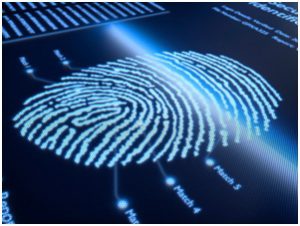
According to a report published by Techsci Research, the global biometrics market size is set to cross $24 Billion by 2021. A further report from Technavio on the global multimodal biometrics market indicated CAGR of more than 15% over the forecast period. Of this marked growth, fingerprint recognition technology holds the largest single factor authentication segment and is predicted to continue to hold this pole position for the foreseeable future.
Richard Forsyth, UK & Ireland Sales Manager of Ievo Ltd, the Newcastle-based manufacturer of biometric recognition systems, explains this growth, “In light of recent appalling terrorist attacks across the world, the need for security has never been greater. Whilst travel and immigration will no doubt continue to hold the largest share of the biometric system market, and the USA still the largest customer, I suspect the less dramatic use of fingerprint readers across a wide range of sectors is actually the main driver of growth, certainly for ourselves.”
“The primary reason for this is that fingerprint recognition systems can provide a bigger return on your investment. Cheaper, more traditional alternatives such as numeric key pads or magnetic swipe cards have fundamental potential security flaws, which biometrics can hugely reduce. These potential flaws equate to the reliance on secondary credentials, which can be a continuous draw on a company’s budget, something that is not applicable to a biometric system. Biometric systems can also prevent theft through highly accurate data reporting and can highlight and monitor attendance patterns directly linked to individual users. This helps to keep both accurate staff working hours for payroll and can also provide accountability. Traditional systems using secondary credentials can be shared, lost or replicated, biometrics counter this potential flaw. Additionally, and probably of more importance to end customers, biometric recognition systems provide an infallible access control system that can be used for a variety of additional purposes without any additional cost involved.”
“A typical example may be a Government data centre where various levels of access are required. To be even considered for such a contract, the access control system would have to be CPNI (Centre for the Protection of National Infrastructure) approved, which we are, whilst our readers, which control access points such as turnstiles, barriers, doors or even data racks, integrate seamlessly with well-known access control systems from such global manufacturers as Paxton, PAC and Honeywell.”
“The resultant data can be used not only for access control and reporting but also for personnel records such as payroll – indeed, this is particularly useful in the construction and industrial sectors when a large site will have a number of subcontractors in addition to directly employed personnel; the access system becomes important not only for just security, but also for payrolls and contract payments.”
The Ievo Ultimate reader uses an advanced sensor which employs multispectral imaging (MSI) technology to scan and capture data, using multiple light sources to read not only the surface of the skin, but also data points from the subsurface level (up to 4mm deep) of a finger. The different light sources can penetrate levels of moisture and debris present on the skin to read data points below. This advanced method allows for a high number of uniquely identifiable data points to be recognised and used for a more accurate, reliable and efficient verification process. The readers are also designed for both external and internal deployment and are equipped with an internal thermostat controlled heater allowing them to operate in conditions as low as -20˚C and, being IP65 rated, they also function in levels of heavy rain.











